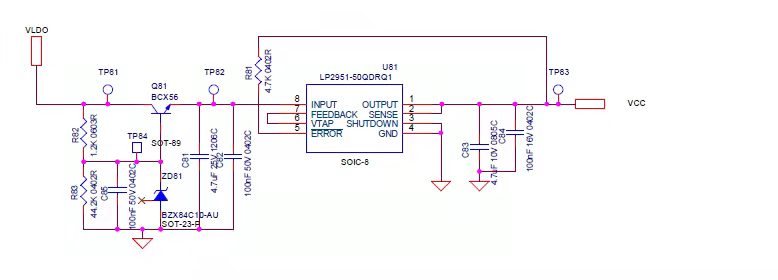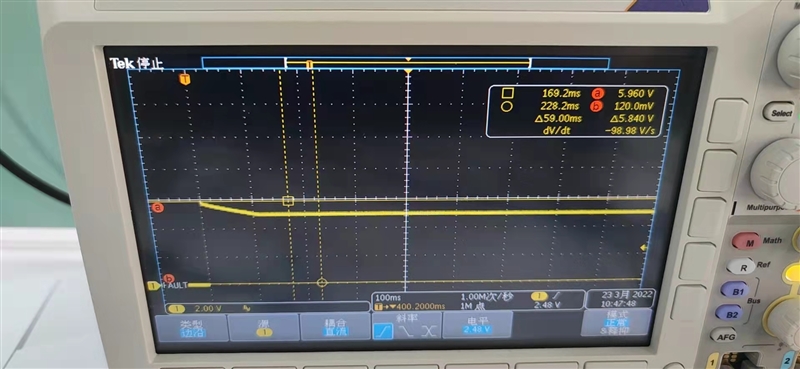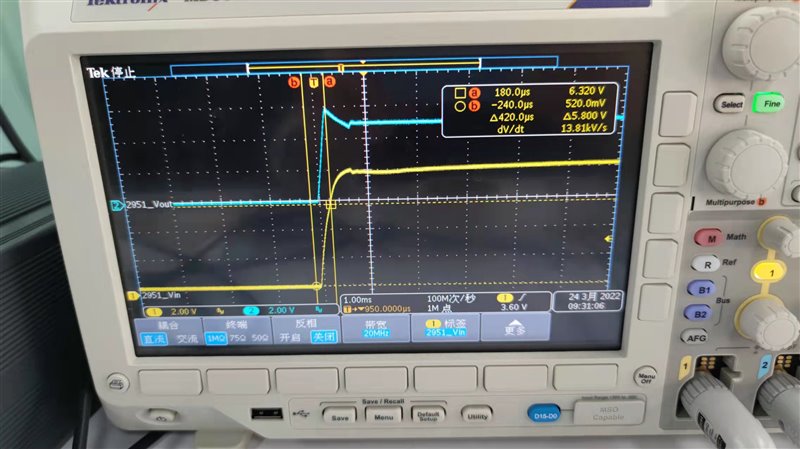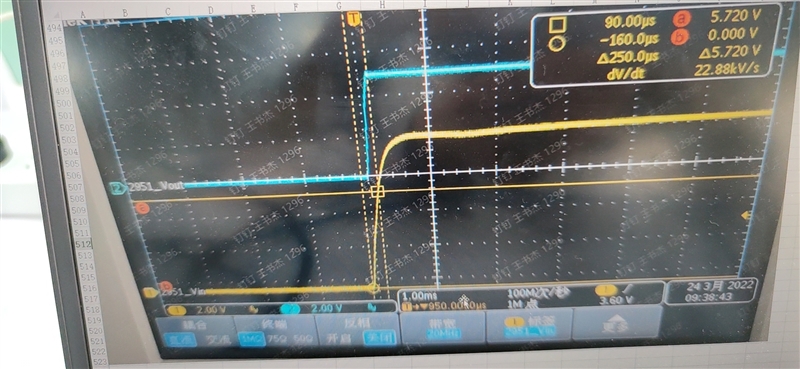Other Parts Discussed in Thread: TCAN4550-Q1
Hi
The start up output waveform and schematic are as below, the spike is up to 6V, the capacitors are all ceramic but we have tried adding 1Ohm resistors, and disconnected the load, the waveform are same, could you please give me some comments? Thanks.







